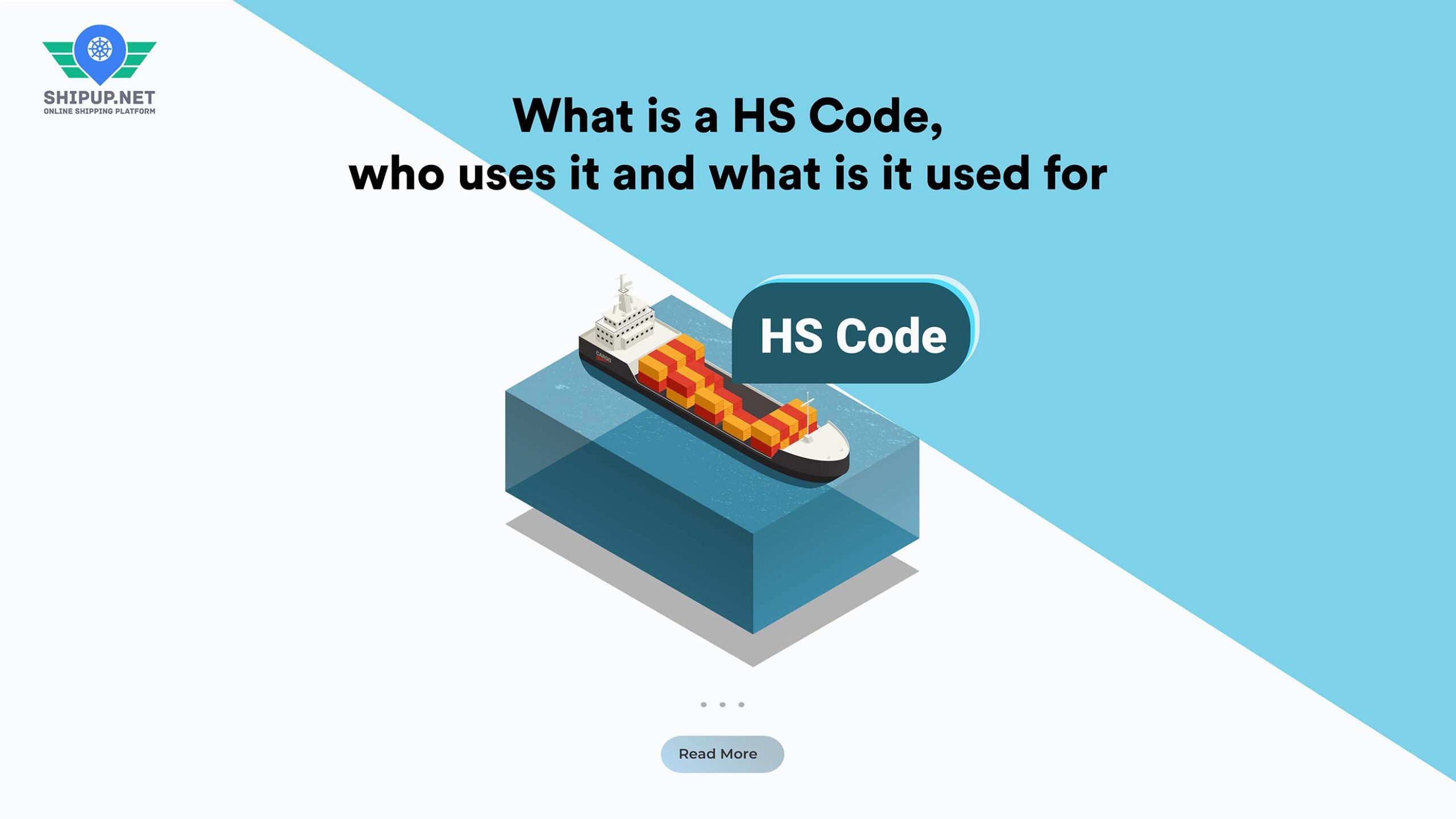Have you ever wondered how products are classified when traded between countries? How do customs authorities assess the numerous taxes and duties to be applied on each commodity? Look no further than the Harmonized System (HS) codes! These standardized numerical classifications were developed by the World Customs Organization (WCO) to simplify international trade, and they play a crucial role in ensuring that trade runs smoothly across borders.
In this blog post, we will delve into the mysteries of HS codes, explaining what they are and why they are so important. We will discuss how HS codes work and how they facilitate the movement of goods around the world, saving businesses time and money. Whether you are an importer, exporter, or simply curious about the world of international trade, read on to discover the fascinating world of HS codes.
Understanding How and Why to Use HS Codes
If you’re involved in international trade, you’ve likely come across the term Harmonized System (HS) codes. But do you know how to use them effectively? HS codes are essential for traders to classify goods and commodities traded between countries correctly. To comply with U.S. and foreign regulations, you need to know the six-digit HS code for each product, which is an international standard developed by the World Customs Organization.
The HS code plays a vital role in exporting physical goods by helping ensure that the right customs duty rates and taxes are applied. It is also used for market research and compliance with U.S. law. If you’re exporting products from the U.S., you’ll need a 10-digit code called a Schedule B number, which includes the HS code plus four extra digits. This number is administered by the U.S. Census Bureau’s Foreign Trade Division and is necessary for completing shipping documentation, reporting exports through the Automated Export System (AES), and obtaining trade statistics.
But how do you go about reading and understanding these codes? Let us take you through it.
Deciphering the HS/HTS Code and Schedule B Number
The HS Code is a numerical classification system developed by the World Customs Organization and comprises more than 5,000 commodity groups identified by a 6-digit code. The first two digits represent the chapter, followed by two digits for the heading, and two more for the sub-heading. Countries are allowed to add longer codes for more detailed classification. The Schedule B number in the U.S. includes the first six digits of the HS code, followed by four additional digits for commodity classification.
For example, let’s decode the HS code for ceramic building bricks: 6904.10.0090. The first two digits, 69, refer to Chapter 69 under Section 13, which covers ceramic products. The next four digits, 6904, refer to the head covering ceramic building materials. The sub-heading for ceramic building bricks is 6904.10, and the additional code used in U.S. exports is 0090, which refers to "hollow bricks."
In conclusion, the HS/HTS code and Schedule B number are essential tools for international traders to classify goods and ensure compliance with customs authorities. Understanding how to read and use these codes accurately can help streamline the export process and avoid costly errors.
In conclusion, you can save time and money by streamlining the export process by understanding what an HS Code is and how to use it. Whether reporting exports to the AES, completing the necessary paperwork, or researching trade statistics, HS codes are vital to ensuring that your shipments get through customs efficiently and accurately.
The HS Code: Facilitating Harmonized Customs and Trade Procedures
The Harmonized System (HS) code is more than just a system for classifying products for import and export. It’s a standardized numerical classification system used by over 200 economies worldwide for customs tariffs and trade statistics collection. Over 98% of international merchandise trade is classified using the HS code.
The HS code also promotes the harmonization of customs and trade procedures, leading to more straightforward procedures and more cost-efficient trade. By providing countries with a standardized system for classifying products, the HS code simplifies regulations for countries and reduces red tape for traders. Additionally, the HS code minimizes the costs related to international trade by enabling the efficient exchange of non-documentary trade data concerning customs and trade procedures.
Who Uses HS Code?
HS codes are used by various groups, including:
- Governments: HS codes are administered by the World Customs Organization (WCO) and used by governments worldwide to regulate imports and exports. Customs authorities use HS codes to determine the correct tariffs and taxes applied to specific products, reducing potential errors and inefficiencies.
- Businesses: HS codes are of paramount importance to businesses that import and export goods across international borders. By using the correct HS code, businesses can calculate the duties, taxes, and fees that will apply to their products, facilitating cost-effective trade.
- Trade organizations: Various international trade organizations use HS codes to develop policies and monitor global trade. For example, the United Nations Statistics Division uses HS codes to generate trade statistics, which provide insight into trade flows and trends.
- Consumers: While not directly involved in international trade, consumers can benefit from the use of the HS code. By using a standardized system for product classification, consumers can trust that they are purchasing products that meet regulatory standards and safety requirements.
The New HS2022: Changes and Implications
On January 1st, 2022, the seventh edition of the HS nomenclature, known as HS2022, came into effect. It’s important to be up-to-date on these changes to ensure your business complies with new regulations.
HS2022 includes a total of 351 amendments to the system, which have brought significant modifications to the way goods are classified and traded. The new edition covers a broad range of goods, including nanomaterials, smarter and greener products, and COVID-19 medical supplies. These changes can affect a broad spectrum of industries, ranging from agriculture and manufacturing to commerce.
For traders, staying updated with HS2022’s amendments is vital to ensure compliance with international trade regulations. HS2022’s changes could alter the customs tariff rates for given products, which will affect the costs of trade. Business entities must ensure that they understand and adapt to these new rules to safeguard their trading activities’ commercial efficiency.
Have you ever wondered how products are classified when traded between countries? How do customs authorities assess the numerous taxes and duties to be applied on each commodity? Look no further than the Harmonized System (HS) codes! These standardized numerical classifications were developed by the World Customs Organization (WCO) to simplify international trade, and they play a crucial role in ensuring that trade runs smoothly across borders.
In this blog post, we will delve into the mysteries of HS codes, explaining what they are and why they are so important. We will discuss how HS codes work and how they facilitate the movement of goods around the world, saving businesses time and money. Whether you are an importer, exporter, or simply curious about the world of international trade, read on to discover the fascinating world of HS codes.
Understanding How and Why to Use HS Codes
If you’re involved in international trade, you’ve likely come across the term Harmonized System (HS) codes. But do you know how to use them effectively? HS codes are essential for traders to classify goods and commodities traded between countries correctly. To comply with U.S. and foreign regulations, you need to know the six-digit HS code for each product, which is an international standard developed by the World Customs Organization.
The HS code plays a vital role in exporting physical goods by helping ensure that the right customs duty rates and taxes are applied. It is also used for market research and compliance with U.S. law. If you’re exporting products from the U.S., you’ll need a 10-digit code called a Schedule B number, which includes the HS code plus four extra digits. This number is administered by the U.S. Census Bureau’s Foreign Trade Division and is necessary for completing shipping documentation, reporting exports through the Automated Export System (AES), and obtaining trade statistics.
But how do you go about reading and understanding these codes? Let us take you through it.
Deciphering the HS/HTS Code and Schedule B Number
The HS Code is a numerical classification system developed by the World Customs Organization and comprises more than 5,000 commodity groups identified by a 6-digit code. The first two digits represent the chapter, followed by two digits for the heading, and two more for the sub-heading. Countries are allowed to add longer codes for more detailed classification. The Schedule B number in the U.S. includes the first six digits of the HS code, followed by four additional digits for commodity classification.
For example, let’s decode the HS code for ceramic building bricks: 6904.10.0090. The first two digits, 69, refer to Chapter 69 under Section 13, which covers ceramic products. The next four digits, 6904, refer to the head covering ceramic building materials. The sub-heading for ceramic building bricks is 6904.10, and the additional code used in U.S. exports is 0090, which refers to "hollow bricks."
In conclusion, the HS/HTS code and Schedule B number are essential tools for international traders to classify goods and ensure compliance with customs authorities. Understanding how to read and use these codes accurately can help streamline the export process and avoid costly errors.
In conclusion, you can save time and money by streamlining the export process by understanding what an HS Code is and how to use it. Whether reporting exports to the AES, completing the necessary paperwork, or researching trade statistics, HS codes are vital to ensuring that your shipments get through customs efficiently and accurately.
The HS Code: Facilitating Harmonized Customs and Trade Procedures
The Harmonized System (HS) code is more than just a system for classifying products for import and export. It’s a standardized numerical classification system used by over 200 economies worldwide for customs tariffs and trade statistics collection. Over 98% of international merchandise trade is classified using the HS code.
The HS code also promotes the harmonization of customs and trade procedures, leading to more straightforward procedures and more cost-efficient trade. By providing countries with a standardized system for classifying products, the HS code simplifies regulations for countries and reduces red tape for traders. Additionally, the HS code minimizes the costs related to international trade by enabling the efficient exchange of non-documentary trade data concerning customs and trade procedures.
Who Uses HS Code?
HS codes are used by various groups, including:
- Governments: HS codes are administered by the World Customs Organization (WCO) and used by governments worldwide to regulate imports and exports. Customs authorities use HS codes to determine the correct tariffs and taxes applied to specific products, reducing potential errors and inefficiencies.
- Businesses: HS codes are of paramount importance to businesses that import and export goods across international borders. By using the correct HS code, businesses can calculate the duties, taxes, and fees that will apply to their products, facilitating cost-effective trade.
- Trade organizations: Various international trade organizations use HS codes to develop policies and monitor global trade. For example, the United Nations Statistics Division uses HS codes to generate trade statistics, which provide insight into trade flows and trends.
- Consumers: While not directly involved in international trade, consumers can benefit from the use of the HS code. By using a standardized system for product classification, consumers can trust that they are purchasing products that meet regulatory standards and safety requirements.
The New HS2022: Changes and Implications
On January 1st, 2022, the seventh edition of the HS nomenclature, known as HS2022, came into effect. It’s important to be up-to-date on these changes to ensure your business complies with new regulations.
HS2022 includes a total of 351 amendments to the system, which have brought significant modifications to the way goods are classified and traded. The new edition covers a broad range of goods, including nanomaterials, smarter and greener products, and COVID-19 medical supplies. These changes can affect a broad spectrum of industries, ranging from agriculture and manufacturing to commerce.
For traders, staying updated with HS2022’s amendments is vital to ensure compliance with international trade regulations. HS2022’s changes could alter the customs tariff rates for given products, which will affect the costs of trade. Business entities must ensure that they understand and adapt to these new rules to safeguard their trading activities’ commercial efficiency.
In conclusion, HS2022 brings in significant updates to the Harmonized System, with amendments impacting several sectors globally. Keeping abreast of the changes and their implications could prepare businesses to stay compliant with customs regulations and trade efficiently in the current worldwide commercial environment.
In conclusion, HS2022 brings in significant updates to the Harmonized System, with amendments impacting several sectors globally. Keeping abreast of the changes and their implications could prepare businesses to stay compliant with customs regulations and trade efficiently in the current worldwide commercial environment.



